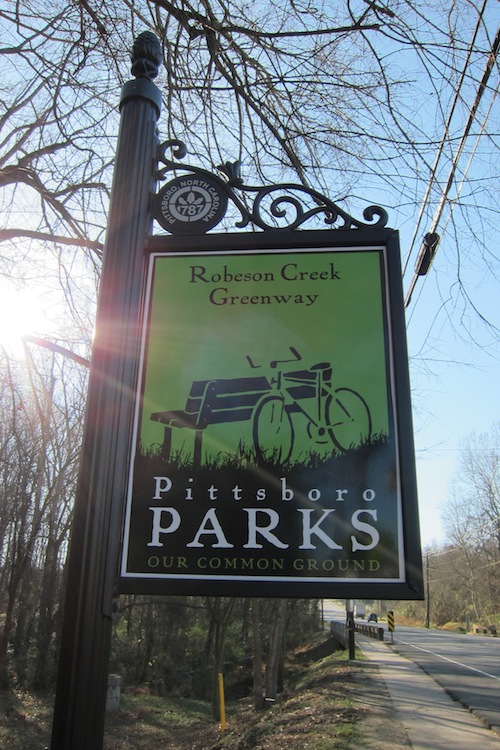The death of the suburban corporate campus
Parks Blog readers know that parks and recreational opportunities play a vital role in enhancing quality of life. Many highly educated millennials are rightly making quality of life a primary focus. This is evidenced by the fact that many are choosing a great place to live before seeking out specific employment opportunities. It looks as though some major corporations are following these millennial trends by locating their corporate campuses where the talent is. Investments in parks, recreation, and creating great places to live pay huge dividends in resulting economic growth. A no brainer really.
Mark Hinshaw, Better Cities & Towns
Political and economic shock waves rippled through two
Puget Sound cities when Weyerhaeuser, the multi-national giant, announced in
late August that it was moving its corporate headquarters from Federal Way to
Pioneer Square in Seattle. Much has been made of the “game changing” impact
this decision will have on Seattle’s First Neighborhood. The significance is
not only economic, but cultural and architectural.
After many decades spent next to a grimy, undulating patch
of asphalt, Occidental Square will soon be bordered along its east side by a
contemporary symbol of global commerce. Designed by The Mithun Architects, the
new Weyerhaueser headquarters (see rendering above) will undoubtedly stand as a
testament to state-of-the-art sustainability and urbanity.
Just as momentous as its arrival in Seattle is the
significance of Weyerhaeuser’s exit from the bucolic campus it has occupied for
more than 40 years. Its iconic, terraced headquarters, deftly spanning a gentle
valley and nestled alongside a reflective lake, was the subject of photographs
and articles in scores of books and journals on design. It represents the
apogee of the idea to insert a corporate symbol into the Arcadian ideal of
American suburbia. The design was a collaborative effort between architects
Skidmore Owings and Merrill (SOM) and landscape architects Sasaki Walker
Associates (SWA).
Not long after the building was finished in 1972, this bit
of architectural mythmaking devolved into what we have since seen replicated
all over the country: hundreds of soul-less “office parks” whose generic
glass-walled or concrete tilt-up buildings could be anywhere. Office parks
built along I-90 in Bellevue could just as easily been seen in the outskirts of
Kansas City or Atlanta. When I travel around the country now, I see many of
these buildings with their parking lots barely half full.
As with many idealized concepts in design, it doesn’t take
long for the mundane “merchant builders” to water down the original concept
into buildings designed by accountants to maximize floor area and minimize
costs. Of course, this actually translated into lower internal costs but higher
externalized costs in the form of highways, long utility lines, widespread
destruction of forests, farmlands and wetlands, and the slathering of suburban subdivisions
across the landscape. It was the equivalent of pouring library paste across a
bed of delicate lichen. That is, essentially, the story of the country over the
last 60 years.
I once had a long conversation with a local elected official
whose mission was to protect his beloved suburban community from what he saw as
an onslaught of undesirable change: apartments occupied by “transient renters,”
buildings higher than two stories and, of course, low-income minorities. He
ended his monologue by exclaiming that suburbia was America’s gift to the
world. Indeed, one can see that pernicious present playing itself out in the
exurbs of Paris and London and, now, in Chinese cities.
Concurrent with the rush to build Levittowns and their
countless carbon copies in the years following World War II, another trend was
quietly taking place. In 1957, the Connecticut General Life Insurance Company
built its new headquarters in Bloomfield, Connecticut. The building was
designed by Gordan Bunshaft, a star architect of the time who was with the New
York office of Skidmore Owings and Merrill.
Three years earlier, SOM had designed the Lever Building on
Park Avenue. Much more than merely a symbol of the soap company, the building
came to represent a distinct departure for the ziggurat-shaped office buildings
erected in the previous decades. (A year later, Mies Van der Rohe added his own
riff on this with the nearby Seagram Building.) The Lever Building was a
tailored, taught and tightly composed assembly of boxes sheathed in a gorgeous,
green glass curtain wall.
For Connecticut General, SOM did something quite startling.
It transported the same crisp, rectilinear box-like forms used in the urban
Lever Building to the verdant countryside. This was the original “skyscraper on
its side,” a phrase attached to the Weyerhaeuser headquarters 15 years later.
The glass structure was not rooted in an urban streetscape in Manhattan but
instead appeared to levitate above a pristine landscape. This was the idea of
commerce separated from social space. The setting was merely a set piece for an
enormous, free-standing, three-dimensional sign.
Decades ago, Willam H. Whyte memorialized this new
social ethic in a major book titled “The Organization Man.” Smartly clad
structures perfectly reflected their pinstripe suited, clean-cut occupants. It
was a near perfect match of sociology and architecture. The male breadwinner
toiling all day inside a glass box, coming home to the American Dream: a
detached “Colonial style” house with a manicured lawn. The Betty Crocker
cookbook of that era advised housewives to have a mixed drink ready for their
husband’s eagerly expected return, along with tips on how to set a table when
the domestic help had the day off. We all know how that dream turned out.
It took a few years for the SOM building to fully command
the attention of other corporations. Perhaps some companies did not initially
embrace the idea that they didn't need to be downtown to conduct commerce. But
a few more did.
In 1963 John Deere commissioned Eero Saarinen, another star
architect of the time, to design its headquarters in the verdant countryside.
Saarinen tucked horizontal stacks of steel and glass into a lush landscape.
Several other major corporations followed suit. Then came the urban "race
riots" of the late 60s. That was excuse enough to decamp to the
hinterlands and the story of white flight to American suburbia began.
But we are in another century now. One with its own very
different cultural and economic imperatives. The entire country, not just the
big cities, is much more racially and ethnically diverse. We have exhausted the
benefits of relentless horizontal expansion; economists even have a term for
this: “diminishing returns.” And most importantly Millennials don’t buy into
that American Dream. They were raised in it, and they had enough of its boredom
and anomie.
Some Boomers smugly claim that Millennials will fall back
into line as soon as they have children. Well, guess what? They aren’t having
kids. They aren’t even marrying. Nor are they buying cars. And not because they
can’t afford them. They don’t want them.
The folks who run Weyerhaeuser are a smart bunch. I’m sure
they started projecting out how long it would be before they would have a
difficult time recruiting younger workers to reverse commute. Silicon Valley
firms are already seeing this kind of rebellion and are building office space
in San Francisco.
In Seattle, Amazon saw it coming, and chose to headquarter
in South Lake Union rather than some outlying location. Microsoft has already
occupied a number of towers in downtown Bellevue. I wouldn’t be surprised to
learn that it was eyeing the soon-to-be-vacated Amgen Campus, near downtown,
for its next big move. Imagine Microsoft on the Beach, with its Redmond campus
converted to research and training for global employees.
The dramatic move by the Big W represents the end of an era.
Mark Hinshaw, FAIA, is an architect and urban planner at
a Seattle architecture firm. He was an architecture critic for The
Seattle Times and is the author of many articles and books, including
"Citistate Seattle" (1999). He can be reached at editor@crosscut.com.




Comments
Post a Comment